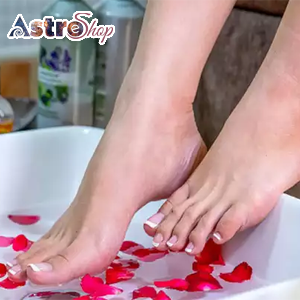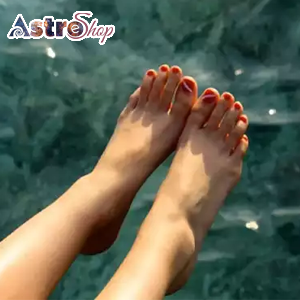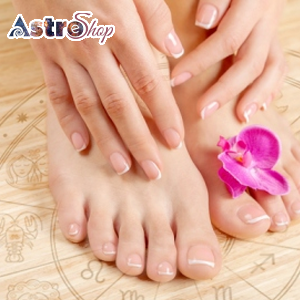Foot reading, As interesting as palmistry, this art offers knowledge of a person’s personality, emotions, and future just by looking at their feet. The ancient art of podomancy is define by the shape, size, and various features of the feet, which give insight into the life of an individual. In this ultimate guide, we will discover how to read feet and find the basic interpretations of the different features of the feet, along with some secrets this practice holds.
Foot Reading Basics
What is Foot Reading?
Podomancy, also recognized as foot reading, is the art of analyzing the feet to understand the character, emotions, and potential life path of a person. Analogous to chiromancy, podomancy has existed since ancient times in different cultures, which remains relatively unknown. It originated from China, India, and Greece. People thought that through feet, as through hands, one could bring out the energy of a body and gain insight into the hidden aspects of life.

Importance of Feet in Foot Reading
Feet are sometimes describing in foot reading as microcosms of the body. Every part of the feet is said to correspond to different parts of the body and different areas of life. Through the feet, a reader can understand health, emotions, and personality characteristics.
To perform the reading of the feet, you must carefully observe the two feet: the size, the shape, the lines, and other features. Keep interpreting feet somewhat subjective and there are variations in different traditions or practitioners. However, there are some general principles and patterns through which you can guide your practice.
Interpretations of the Features of the Foot Reading
The Shape of the Foot
The shape of the feet can give so many facts about an individual. Some normal foot shapes have the following meanings:
- Square Foot: Sometimes termed “Peasant Foot.” This foot is usual for a person who is practical, reliable, and hardworking. Such an individual will be ground and feel and be stable.
- Greek Foot: That one where the second toe is preferably a bit longer, a Greek foot has been meant to be link with creativity, leadership, and ambition. Such a person with this foot type is often consider very innovative and inspiring.
- Egyptian Foot: This kind of foot has toes taper down in a straight line, that is, from the big toe to the little toe. Such a foot means the person is idealistic, compassionate, and artistic.
- Roman: A Roman foot has the first three toes of equal length. The shape of such toes has traits concerning the persons who are energetic, social, and live a life of equilibrium.

Here are some of the interpretations:
Big Toe
A long big toe shows a thinking and imaginative person. A person with a big prominent toe often is a problem and innovator. A short big toe means a more practical individual with a down-to-earth attitude towards life.
Second Toe
A long second toe most often has a Greek foot and indicates leadership traits and ambition. A short second toe reveals a person who values harmony in life and is comfortable in a supportive position.
Third Toe
A long third toe is an indication of energy, drive, and a high work ethic. People with this toe often have some purpose in life and are intent. A short third toe shows a more relaxed and easy-going nature.
Little Toe
The little toe is said to represent communication and adaptability. A long little toe identifies with a character who is open-mind and flexible. Someone with a short little toe is relatively reserve, and careful, and tends to be cautious about revealing their affectionate feelings.
Horizontal Lines
A person can depict life’s challenges or periods of stress with the presence of horizontal lines crossing the toes or the entire foot. The number, as well as the depth, can sometimes help in deducing the degree of the described event.
Vertical Lines
It explains an individual with a strong and energetic character, with the willpower to succeed in life’s challenges. These lines indicate a person’s ability to overcome obstacles and maintain a positive outlook.
Moles and Spots
Moles and spots on the feet can mean differently based on different locations. For instance, if the mole is on the big toe, it could mean that one is a person smart and full of creativity, but if it is a spot on the heel, it might mean something to do with attachment towards the family or roots.
Calluses and Corns
Calluses and corns develop primarily due to pressure and friction. Therefore, they can represent a person’s pressing areas of life or where they defend themselves.

Foot Reading Secrets
Let’s connect the dots: Foot Reading and Palmistry
When both hand-reading and footreading are combining, it can offer extensive information about one’s life. An analysis of the hands and feet can describe a person in a more wholesome manner, their strengths as well as challenges in life. Look for patterns and correlations between the lines and shapes on the hands and feet to enhance your interpretations.
Apart from personality and emotions, foot reading provides deductions for health. The site of the feet, colour, texturing of the skin, and temperature have a clue about the general health status of a person. Cold feet can depict a problem of poor circulation. Dry, cracked feet may suggest dehydration or lack of nutrients.
There are, of course, general principles and patterns in footreading, but it is very important to lean on your intuition as a reader. Your intuitive insights will provide adaptive guidance to the uniqueness of every individual’s feet and in interpreting the features you notice. Now, practice your intuitive skills regularly by gazing at your feet and noting what impressions and feelings come to mind as you are reading.
Ethical Considerations in Foot Reading
With all these divination practices, one must be sensitive and respectful with reading the feet. Before you can observe the feet of the person, you must ask for permission at all times. Also, from that point, you must make your best judgment in what you will say in releasing to the person. Give your impression as suggestions rather than predictions. Rather, encourage people by providing information to further empower them and make informed choices.
Conclusion
Foot reading, or, in official calling, podomancy, is not less exciting and interesting than palmistry. Studying the configuration, size, lines, and other physiognomic characteristics of the feet allows one to learn about many of the peculiarities, characters, emotions, and even the possible life path of a reader. If you’re an accomplished palmistry practitioner or a curious beginner looking to assist in your practice, understanding foot reading will help provide an overall image of the person for whom you are reading.
Be sure to approach your reading with an open mind and a respectful attitude. Trust your intuition and harness that information to empower and guide those you read for. With practice and dedication, footreading can become an invaluable addition to your repertoire of divination skills, providing uniquely potent perspectives and deep insight into others’ lives.
To Know more or a better start in your life. Do you need any special puja for Grah dosha nivaran, navrgrah shanti puja, or any other puja related to your concern? You should consult with the best astrologer. You can also order the most suitable Fengshui, lucky Gemstone or Rudraksha to bring Prosperity and good luck to your home. Book an appointment with the World’s Famous Astrologer and discuss a suitable one. He will guide you in the best way, according to your Janam Kundli Online or Marriage Kundli.



